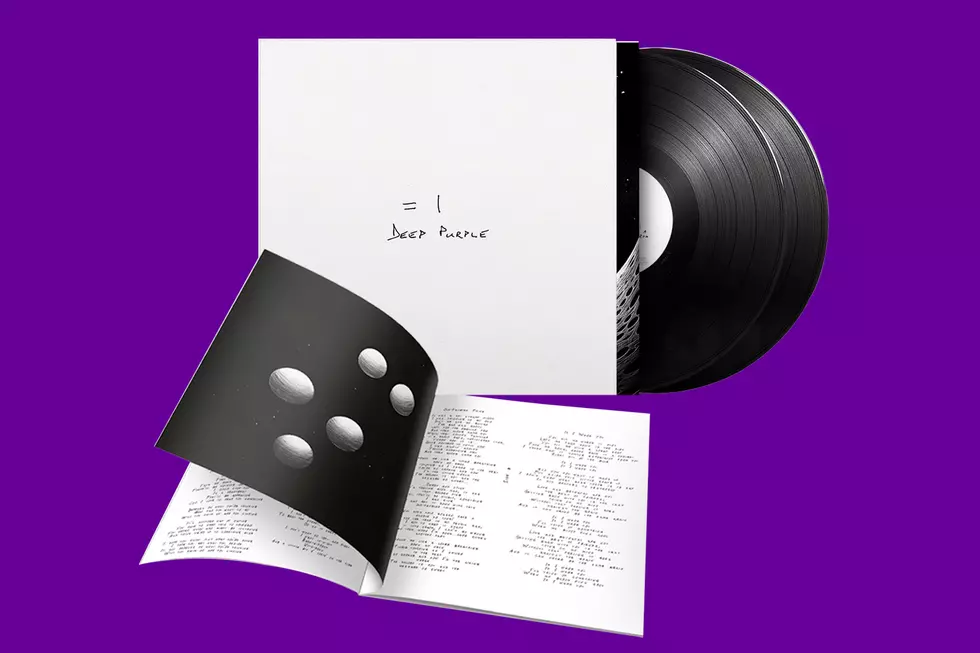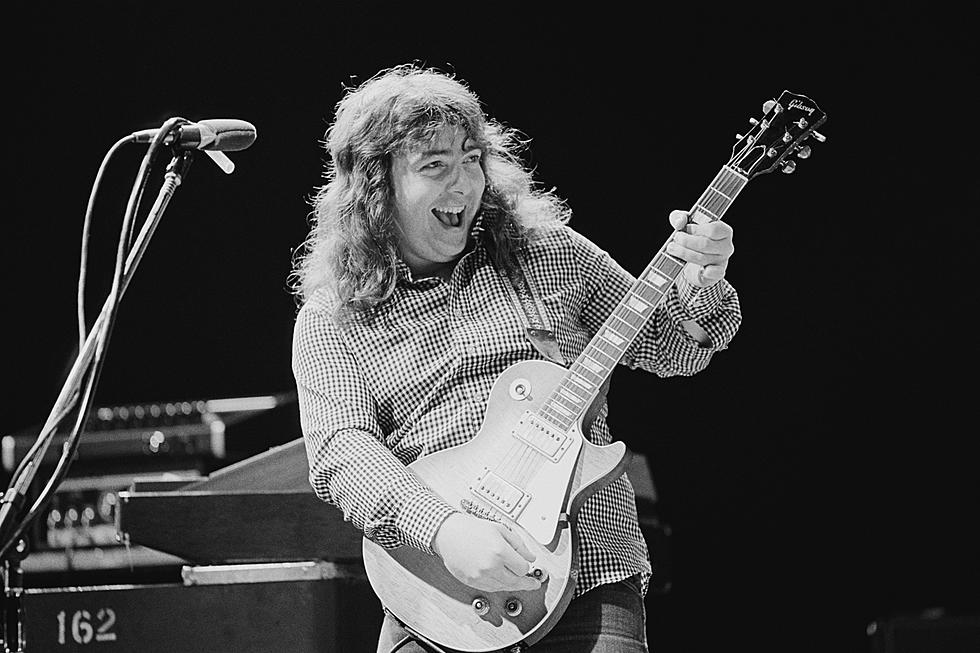
Top 10 David Coverdale Songs
David Coverdale has always been associated with groups, even if he's the only constant. He was part of two Deep Purple lineups in just three years. Whitesnake, the act he formed next, has had more than 10 guitarists.
Sure, he's put out a few records under his own name, beginning with 1977's White Snake. But Coverdale has emerged as the quintessential frontman, a big-maned, big-voiced singer with a revolving cast of characters to support his personal vision.
At first, that vision emerged from this metal-blues place that was a match-fit with Coverdale's oaken delivery. His 1973 arrival changed Deep Purple in important ways, as their songs began to gurgle with funky grit. The tandem addition of Glenn Hughes also bolstered Deep Purple vocally, giving the group's singers enough firepower to hold their own against guitarist Ritchie Blackmore's onslaught.
Those changes ultimately proved too much for Blackmore, who'd begun dabbling in classical prog before reimagining Deep Purple as amp-blowing hard-rockers. Coverdale kept going, eventually founding Whitesnake in 1978. At first, this new band sounded something like his old one. As the '80s wore on, however, Whitesnake put aside blues influences, finding their greatest successes by echoing the lighter metal sounds of the day.
With such a lengthy and celebrated career, there were bound to be solid choices that didn't make our list – including "Blindman," from that 1977 solo album; "Might Just Take Your Life" from his first Deep Purple record; and the lovely acoustic version of 2011's "One of the These Days." Hard choices had to be made, but we finally emerged with the Top 10 David Coverdale Songs.
10. "Judgment Day" (Whitesnake, 1989)
David Coverdale wanted to release this new song as the advance single for Slip of the Tongue, but his label went with a remake of "Fool for Your Loving," found later on our list of Top 10 David Coverdale Songs. They were right: Steve Vai, who replaced the injured guitarist Adrian Vandenberg for these sessions, completes a sound that's probably too darkly ominous. "Judgment Day" certainly isn't representative of the rest of Whitesnake's 1989 album, which is very much defined by its synthy, overcompressed '80s-era production values. Still, it all sets up for one of Coverdale's best late-period vocals.
9. "Lady Luck" (Deep Purple, 1975)
Come Taste the Band is sometimes dismissed by Deep Purple's deepest fans, since it's their only studio project without either Ritchie Blackmore or Ian Gillan. This anthemic triumph suggests that a second look might be in order – even though it almost never made the final track listing. "Lady Luck" was written by Jeff Cook, friend and composing partner of Blackmore replacement Tommy Bolin. The recording session briefly broke down, however, when Bolin couldn't remember all of the lyrics. He tried but couldn't get Cook on the phone. Coverdale then stepped in, recast most of the narrative, and ended up earning a co-writing credit.
8. "Pride and Joy" (Coverdale-Page, 1993)
A standout moment amid often-transparent Led Zeppelin-isms, "Pride and Joy" boldly expands this album's otherwise familiar musical palette: Coverdale pulls out his acoustic, while Jimmy Page adds dulcimer and a ballsy harmonica. Of course, Coverdale is no Robert Plant. So, even with some of the most focused playing from Page since the late '70s, the results aren't Zeppelin. At that point, however, they'd been gone so long that even a fun, if blatant photocopy was highly anticipated. It all helped push "Pride and Joy" to the top of the album-rock track charts for six weeks.
7. "Crying in the Rain" (Whitesnake, 1982)
Coverdale explores the searing pain of divorce on the first selection on our list of Top 10 David Coverdale Songs that Whitesnake reworked for subsequent release. (But certainly not the last.) The superior original version prominently featured Bernie Marsden on guitar, and took things at a bluesier, more sinister pace. Coverdale sounds like a cornered animal. By the time he returned to "Crying in the Rain" for Whitesnake's self-titled 1987 album, however, the band's lineup – and their musical approach – had dramatically shifted. The update, featuring John Sykes in place of Marsden, reflects their turn to the hair-metal style of the era.
6. "Stormbringer" (Deep Purple, 1974)
Blackmore quit not long after this, fed up with the more R&B-influenced tack Deep Purple took after Coverdale joined. You wouldn't know it based on this album-opening, throwback goth-metal number, however, as the group pushed back against all of those stylistic changes. Elsewhere, the all-over-the-place Stormbringer sounds like what it is: A breakup album. But here, at least, Coverdale works perfectly in tandem with the soon-to-depart Blackmore, who's always had a penchant toward ye olde magic and sorcery. "Stormbringer" is, after all, a cursed sword that appears in a series of stories by fantasy author Michael Moorcock.
5. "Fool for Your Loving" (Whitesnake, 1980)
Coverdale kept "Fool for Your Loving," rather than give it to B.B. King, and was rewarded with Whitesnake's breakthrough hit in the U.K., where the lean, searching song reached No. 13. King approached Whitesnake's Bernie Marsden about composing a song for him, but things went far better than planned. Producer Martin Birch and Coverdale "looked at each other and said, 'I think we should hang on to this,'" Coverdale said in 2018. "Sorry, B.B.! And that was our first significant hit around the world." As with "Crying in the Rain," Whitesnake later retooled "Fool for Your Loving," this time for Slip of the Tongue. The new version actually charted higher in the U.S., becoming a Top 40 hit.
4. "Is This Love" (Whitesnake, 1987)
Asked by EMI execs if he had material that might be suitable for labelmate Tina Turner, David Coverdale began work on a song that became "Is This Love." Once again, Coverdale decided to keep it for himself, rather than letting it serve as the next salvo in Turner's wholly unexpected '80s-era comeback. It worked this time too: "Is This Love" became the second consecutive Top 5 hit off Whitesnake's multi-platinum self-titled album. Still, its origin story – and the fact that the song maintains a steady dynamic, rather building up to a more-typical return of the full band – meant that Coverdale continued to feel a bit nervous playing it before head-banging festival crowds. Turns out, the metal folks were quickly won over.
3. "Love Ain't No Stranger" (Whitesnake, 1984)
As popular as "Is This Love" no doubt is, it's not the highest-ranking power ballad on our list of Top 10 David Coverdale Songs. That honor goes to the lesser-known, but more interestingly constructed "Love Ain't No Stranger," from Whitesnake's 1984 breakthrough U.S. album Slide It In. Coverdale's former Deep Purple bandmate Jon Lord sets the stage as Coverdale deftly moves from lonesome memory to a hard shove against loss – and then back. A tough edition of Whitesnake featuring Cozy Powell on drums meets him stride for stride, creating a highlight from the period when their increasingly metallic approach still boasted some bluesy grace notes.
2. "Mistreated" (Deep Purple, 1974)
The only track from Burn where Coverdale sings alone, "Mistreated" had apparently languished for a lengthy amount of time as an unfinished Blackmore track. So, the pressure was on for the group's new singer. Coverdale agonized over his vocal, finally nailing it on the second night. "I tried very hard because I knew it was essential to get the strong emotive quality the song needs. The thing I wanted was for somebody who was listening to the song to think, 'I know what he's talking about,'" Coverdale later remembered. "The reason it didn't come off straight away was simply that I was trying too hard."
1. "Here I Go Again" (Whitesnake, 1987)
Whitesnake made a habit of returning to their own stuff into the late '80s, often with diminishing returns. Later versions of these songs, like the group itself, could come off as over-polished and a little too conventional. Then there was "Here I Go Again." An initial 1982 run through feels slight compared to the redemptive thunder of their take from five years later. Coverdale's tale of heartbroken resiliency suddenly rose to the top of the charts, creating a sense of community among those who'd loved and lost. "Everybody has a different 'Here I Go Again' story," Coverdale told the Metal Show in 2011, "and fortunately, the majority of them are positive." Sometimes, as with "Here I Go Again," you just have to wait a while.
Top 50 Classic Heavy Metal Albums
Whitesnake Video Star Tawny Kitaen's Rock ‘n’ Roll History
More From Ultimate Classic Rock









